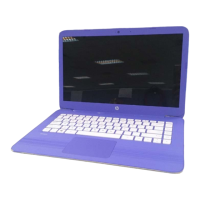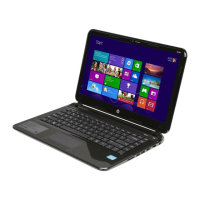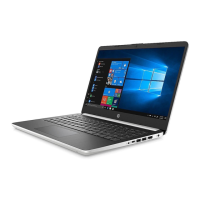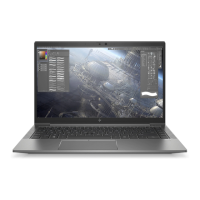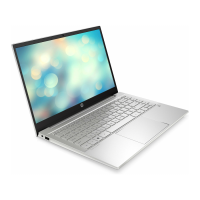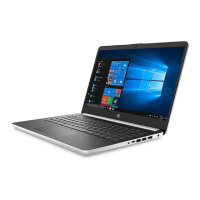
Do you have a question about the HP 14 Series and is the answer not in the manual?
| Series | 14 Series |
|---|---|
| Category | Laptop |
| Processor | AMD Ryzen 3 / Ryzen 5 / Ryzen 7 |
| Graphics | AMD Radeon Graphics |
| Display | 14-inch HD (1366 x 768) / FHD (1920 x 1080) |
| Memory | 4GB / 8GB DDR4 |
| Storage | 128GB / 256GB SSD |
| Operating System | Windows 10 Home |
| Battery | 3-cell, 41 Wh Li-ion |
| Dimensions | 32.4 x 22.5 x 1.79 cm (12.76 x 8.86 x 0.70 in) |
| Ports | HDMI |
| Wireless | Wi-Fi 802.11a/b/g/n/ac and Bluetooth (version varies by model) |
Describes components and ports located on the right side of the laptop.
Details components and indicators found on the left side of the computer.
Covers the screen panel, its features, and related settings like low blue light mode.
Explains the layout and components of the keyboard, including the touchpad and special keys.
Identifies components visible on the underside of the laptop, such as vents.
Explains the purpose and location of various labels affixed to the computer for identification.
Lists and describes the main internal and external parts of the computer.
Breaks down the display assembly into its constituent parts and their descriptions.
Identifies various internal cables and their corresponding spare part numbers.
Lists common accessory parts and their spare part numbers, such as adapters and kits.
Covers essential tools, general service considerations, and handling of plastic parts and cables.
Provides guidelines for safely handling and transporting computer drives to prevent damage.
Details workstation setup, grounding, and electrostatic discharge information for safe operation.
Explains how static electricity is generated and how to prevent damage to electronic components.
Recommends equipment and materials for grounding and protecting against static discharge.
Outlines procedures for safely packaging and transporting computer equipment to prevent damage.
Outlines initial steps and safety procedures before starting component removal.
Step-by-step instructions for removing and replacing the laptop's bottom cover.
Detailed procedure for safely removing and installing the computer's battery pack.
Instructions for removing and installing RAM modules, including handling precautions.
Guide for replacing the SSD, covering removal of the drive and its securing screw.
Procedures for removing and replacing the main system board and its connections.
Instructions for removing the entire display assembly from the laptop chassis.
Steps to access and enter the computer's BIOS setup utility.
Methods to check the current BIOS version for update decisions.
Information on how to find and install BIOS updates from the HP website.
Detailed steps for downloading and preparing a BIOS update file for installation.
Guide to using the Windows-based tool for hardware diagnostics.
Steps to obtain and install the diagnostic tool for Windows.
Instructions for using the pre-boot UEFI diagnostic tool for hardware issues.
Methods to download the UEFI diagnostic tool to USB flash drives.
Details on using and customizing remote diagnostic settings via BIOS.
Procedures for backing up personal data and creating recovery media using HP tools.
Steps for restoring the computer from backup or refreshing the system.
How to modify the boot sequence to start from recovery media.
General technical specifications for the laptop, including dimensions and power.
Detailed technical specifications for the laptop's display panel.
Technical details for M.2 SATA SSDs used in the computer.
Technical details for M.2 PCIe SSDs used in the computer.
General electrical and physical requirements for power cord sets.
Country-specific power cord certifications and standards.


